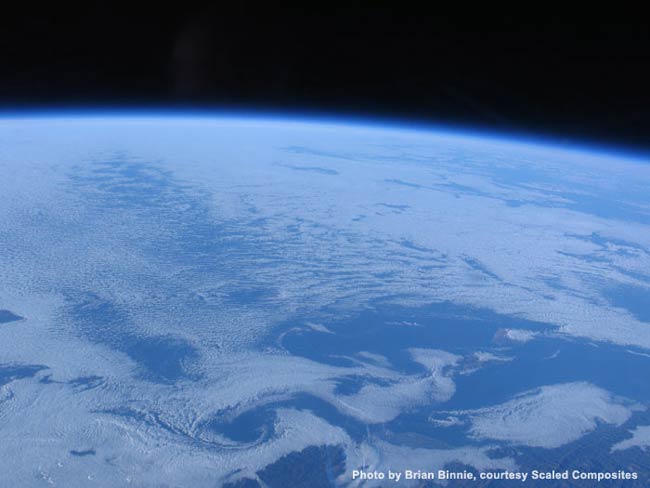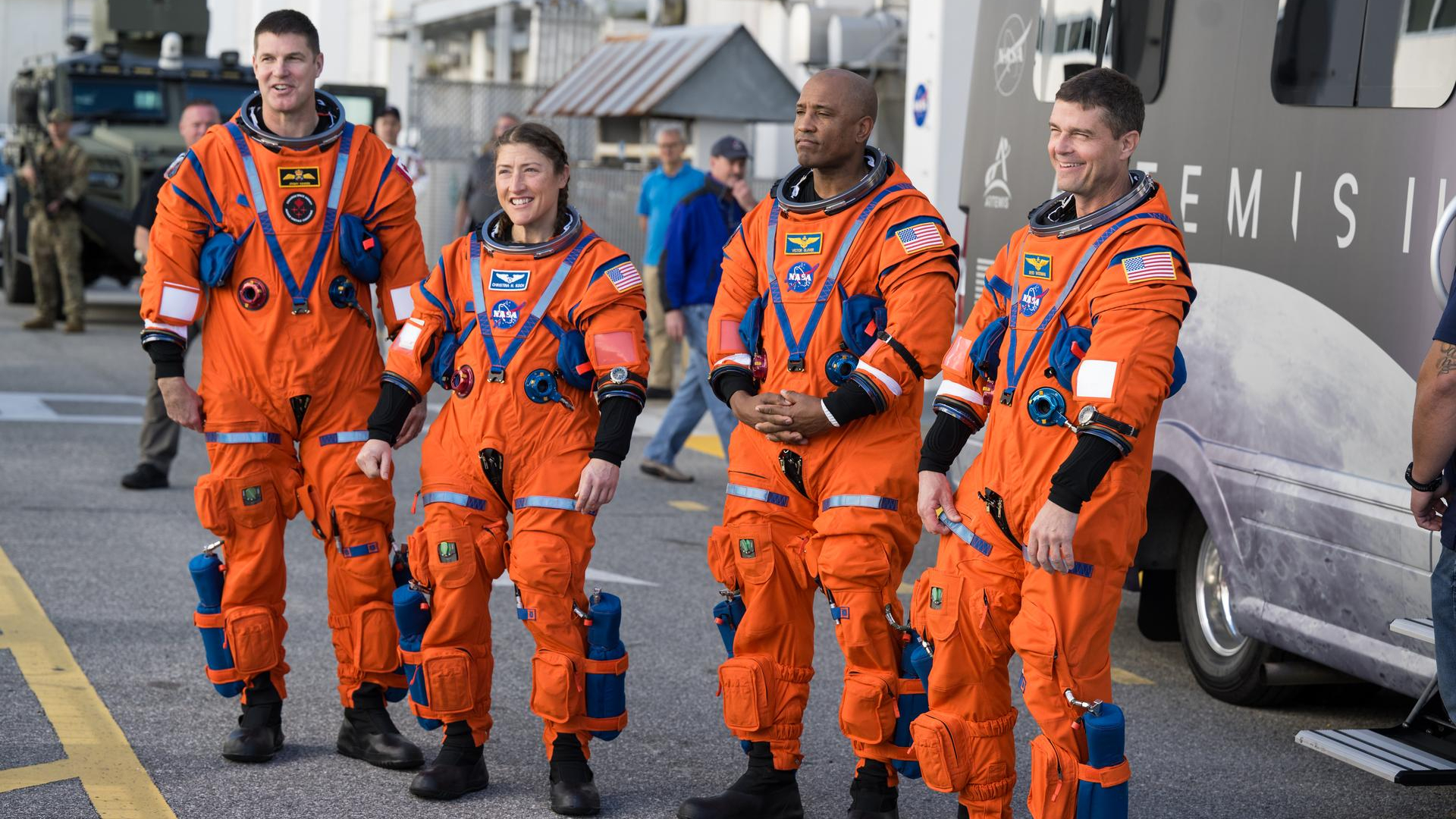Doctor's Orders: The Right Stuff for Space Tourists

Is your "right stuff" quotient up to snuff?
Last December, the U.S. Congress passed the Commercial Space Launch Amendments Act of 2004. That legislation gave the Federal Aviation Administration (FAA), among other duties, the go-ahead to start shaping rules on medical requirements for a spaceship passenger -- termed a "space flight participant" - an individual (who is not crew) carried within a launch vehicle or reentry vehicle.
The FAA's Associate Administrator for Commercial Space Transportation (AST) has already issued draft guidelines for those ready-and-wanting space tourists among us.
Under a new regulatory regime, you as a paying passenger will be able to zoom into space sitting inside a commercial space vehicle once you've been informed of and assume the significant risks of the venture. Additional rules yet to come, FAA officials explain, will help promote the emerging commercial human space flight industry, putting it on a solid regulatory footing.
Make astronauts of us all
There's good reason for the Federal hubbub. Ticketed public space travel is getting more real by the day.
Repeat flights last year by SpaceShipOne flights to the edge of space demonstrated that fact. Space aviator Burt Rutan, along with his Scaled Composites team in Mojave, California -- backed by bucks courtesy of billionaire Paul Allen -- snagged the $10 million Ansari X Prize. They won the purse as the first private outfit to launch a vehicle that carried the equivalent weight of three persons on board from the Mojave Spaceport to suborbital space and return safely twice within a two-week span.
Breaking space news, the latest updates on rocket launches, skywatching events and more!
That was quickly followed by Sir Richard Branson, owner of Virgin Airlines, taking the wraps off Virgin Galactic. He plans to fly patrons into suborbital space within the next two or three years aboard a fleet of five passenger spaceships now under design by Scaled Composites. In licensing SpaceShipOne's technology, Branson wants to build the world's first private spaceship to go into commercial operating service.
"Standing at the edge of the Mojave Desert back in October, I've got to tell you, the stomping grounds of Buck Rogers didn't seem all that far away anymore," admitted FAA Administrator Marion Blakey last month during a Commercial Space Transportation Forecast Conference in Washington, D.C.
"You know, the steps we take today are pouring a foundation for an industry that very well could make astronauts of us all," Blakey said.
Cruise to the edge of space
Astronauts conjure images of the paragon of good health, exercised to the max, posture perfect, and eyesight that gives Superman a run for his money.
The picture will likely be quite different for paying space travelers. One thing the FAA must wrestle with is what sorts of medical requirements might be necessary.
"You must have a commonsense approach," said Melchor Antunano, Director of the FAA's Civil Aerospace Medical Institute in Oklahoma City, Oklahoma.
For suborbital flights, Antunano said, one proposal is having a passenger fill out a medical questionnaire, leaving it up to the spaceship operator to determine if that person is in a go or no-go condition. Also, a paying customer may need to sign a consent form that he or she accepts the risk of a cruise to the edge of space.
For an orbital trek, it makes sense to go another step, perhaps having a space tourist undergo some form of pre-flight testing, Antunano said.
Public transit into orbit
There are several factors to take into account, depending on whether a passenger is taking a speedy "pop top," up-and-down, suborbital voyage, versus climbing onboard space machinery to roar off into orbit for an extended stay.
A suborbital flight subjects a strapped-in passenger to acceleration and deceleration stresses, as well as the potential for an explosive decompression in flight, Antunano said. Exposure to cosmic rays and solar radiation is not of great concern on such a rapid rocket flight. Similarly, the few minutes of microgravity a space trekker will experience shouldn't be a worry.
But public transit into orbit is another story.
Along with takeoff and reentry forces, a person could be subjected to zapping cosmic rays and radiation exposure due to the length of flight and flying higher. Then there's the medical effects from prolonged microgravity that must be considered.
"Once again, you've got to go back to a commonsense approach...taking into account the magnitude of the different stresses, be it suborbital or orbital," Antunano said. Overall, care in crafting rules for spaceship operator and traveler, and not stifling the advancement of space tourism, is key. "We have to give this industry an opportunity to grow...they need a chance."
Challenge at every curve
The FAA's Blakey has noted that the importance of safety in the commercial human space flight industry is critical. "We have a collective goal, and that is to ensure that this fledgling industry has wings to fly...making sure that the designers and manufacturers have the freedom to dream...the freedom to design and build and test," she said.
Along with Burt Rutan's Scaled Composites group and Richard Branson's Virgin Galactic, XCOR, Rocketplane, SpaceX, Armadillo Aerospace and others are working to complete reusable launch vehicles in the hopes of carrying passengers in the near future.
In addition, Blakey said, new prizes have been announced that offer both private and public incentives to continue these endeavors and make commercial human space flight "routine."
America's Space Prize, established by entrepreneur Robert Bigelow to encourage private orbital spaceflight, is at $50 million.
"That's quite a carrot," Blakey said. "But even a $50 million carrot at the end of a 62-mile string won't get the job done. Let me be plain: Beyond the TV lights and glitz, we have an important enterprise in front of us ... and it's a road that's got a challenge at every curve," Blakey explained.
Off-the-planet traffic
Given all the rocketry and entrepreneurial muscle, is there a public willing to plunk down hefty chunks of their payroll to become payload?
"Independent market research data, compiled over the last several years, has shown that commercial space travel has the potential to be a billion-dollar industry in the next 20 years," says Eric Anderson, president and CEO of Space Adventures, Ltd., headquartered in Arlington, Virginia.
"With this burgeoning industry, there are many first-time-ever opportunities for not only adventurers, but investors alike," Anderson said at a gathering of space travel advocates earlier this week in Scottsdale, Arizona.
While nobody is quite sure just how big space tourism might become, there are those who point to how large off-the-planet traffic has already become - that is, commercial air travel, and just in the United States alone.
A recent FAA outlook reported that last year 688.5 million people flew on U.S. commercial air carriers. By 2015, the number of passengers is expected to top one billion.
Now, just add a little speed and altitude - a readymade market?
Card-carrying M.D.
Whatever happens, in the offing are standards for space tourism, including some sort of civilian medical rules and regulations.
There is clear need to differentiate between the medical regulations placed on astronauts or military personnel and those placed on passengers aboard private spaceships.
That's the view of Peter Diamandis, not only a card-carrying M.D. from Harvard Medical School, but also the sparkplug behind the X Prize and the Zero-G Corporation, which is already taking people up regularly for free-floating thrill rides on a jet plane. "I hope in the long run it really will look more like today's aviation business," he said.
Diamandis said that on an American space shuttle or Russian Soyuz mission, health is critical because of two reasons.
For one, if you are in a critical crew position, your health problem could endanger the life of others. Secondly, on an orbital mission, your health problem could cause the mission director to have to make a difficult choice, Diamandis said, between your possible death or ending a billion dollar mission early, presuming that returning to Earth could save your life.
"In a suborbital mission when you're in the back seat, neither of these situations is relevant," Diamandis pointed out. "The decision not to fly a passenger for medical reasons should be left up to the operator. If the operator wants to take a chance with a person with a heart condition who has always dreamed of flying into space, then that should be a decision between the operator and passenger."
Good and bad implications
Geoffrey Crouch, Professor of Marketing in the School of Business at La Trobe University in Melbourne, Australia is keenly studying the emerging space tourism market. He senses that medical regulations might have both and good and bad implications for future space tourists.
"Medical requirements could have a substantial impact on customer attitudes toward space tourism," Crouch observed. "On the one hand, medical testing and training has cost, time and hardship implications. On the other hand, this may be seen by would-be 'citizen astronauts' as part of the total experience of becoming a space traveler."
Crouch said space tourism marketers need an understanding of both of these negative and positive effects on customer behavior.
"The issue of the full disclosure of the medical and safety risks involved is also pertinent to the question of the level of medical regulations and training," Crouch advised. The issue for regulators: What is the best way to protect the interests of the general public?
Age-and-fitness filter
"It seems to me that there will be a difference between the requirements for suborbital missions and for orbital tourist flights," said Derek Webber, the Washington, D.C. Director for Spaceport Associates and a leading authority on space tourism.
For a short 15-minute suborbital experience, the effects of the ride on a traveler should be mild, Webber said, although it might depend on the acceleration regime for any given tourism vehicle. "We do not generally expect to see stringent medical checks before getting on a hairy roller coaster ride at a Six Flags theme park, for instance," he said.
But for the orbital experience, Webber continued, the potential rigors of reentry and maybe even a recovery at sea, a higher level of fitness may be required.
In the business of public space travel forecasting, Webber said it is important to discount the potential market by some proportion due to wanna-be space tourists that aren't fit enough to make the journey. Also not many young folks tend to be rich enough to be a potential space tourist.
"So a pragmatic look at demand requires that some combined "age-and-fitness" filter criterion be used to avoid overstating the market potential. However, because the exact nature of medical requirements is still not known, we cannot today be precisely sure how big the discount factor should be," Webber said.
Webber said that, gradually, we will come to an understanding that makes sense.
"We can be sure that the space tourist will not be expected to meet the same levels of fitness demanded of today's government astronauts," Webber said. "After all, the tourist is headed off on vacation, whereas the astronaut is headed off to work to his orbiting construction site."
- Multimedia: The Zero-g Experience

Leonard David is an award-winning space journalist who has been reporting on space activities for more than 50 years. Currently writing as Space.com's Space Insider Columnist among his other projects, Leonard has authored numerous books on space exploration, Mars missions and more, with his latest being "Moon Rush: The New Space Race" published in 2019 by National Geographic. He also wrote "Mars: Our Future on the Red Planet" released in 2016 by National Geographic. Leonard has served as a correspondent for SpaceNews, Scientific American and Aerospace America for the AIAA. He has received many awards, including the first Ordway Award for Sustained Excellence in Spaceflight History in 2015 at the AAS Wernher von Braun Memorial Symposium. You can find out Leonard's latest project at his website and on Twitter.
